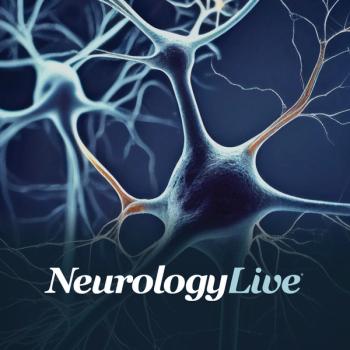
NeuroVoices: Susan Landau, PhD, on the POINTER Trial and Understanding the Link Between Elevated Alzheimer Biomarkers and Cognition
The research neuroscientist at the University of California Berkeley provided insight on findings from the US POINTER study and why previous thoughts on the link between relevant biomarkers and cognition may be slightly incorrect.
The Alzheimer’s Association US Study to Protect Brain Health Through Lifestyle Intervention to Reduce Risk (US POINTER) is a 2-year clinical trial assessing whether lifestyle interventions that simultaneously target several risk factors protect cognitive function in older adults who are at increased risk for cognitive decline. The study is designed to incorporate several dimensions of race, ethnicity, and cardiovascular risk to better understand how heterogeneity influences Alzheimer disease (AD) pathophysiology and cognitive outcomes.
At the recently concluded
Above all, findings from POINTER showed that amyloid and tau were not associated with Preclinical Alzheimer Cognitive Composite (PACC) scores, contrasting a large body of evidence in more homogenous cohorts. Landau, research neuroscientist at the University of California Berkeley, sat down with NeurologyLive® at the conference to discuss her presentation on the data and their clinical significance for the AD community. As part of a new iteration of NeuroVoices, Landau gave insight on the most surprising aspects of the data, the potential reasons for it, and whether misinformation is a problem in this research landscape.
NeurologyLive®: Can you provide an overview of your presentation?
Susan Landau, PhD: The US POINTER trial is a multidomain lifestyle intervention. The baseline enrollment has just completed, with 2000 individuals recruited across the United States from five sites for the intervention part, including an imaging sub-study for half of the participants. This population is unique for its heterogeneity and diversity compared to traditional observational studies or clinical trials, like the Alzheimer's Disease Neuroimaging Initiative (ADNI). The project aims to understand how Alzheimer's Disease Neuroimaging biomarkers relate to cognition in these diverse cohorts.
Among your findings, what stands out the most to you? From a neurologist perspective.
What I can say is we still have a lot of questions. But what I can say so far is that the POINTER study did successfully enroll this heterogeneous group. Almost a third of the Pointer participants are from underrepresented racial and ethnic groups. They also have a lot of cardiovascular risk characteristics, which was by design in enrollment. So that was successfully done. We can see those risk and diversity characteristics in the Pointer baseline cohort relative to the ADNI cohort. What we saw, which I think is the most interesting finding so far, is that in ADNI, and in many other studies that have recruited participants from memory clinic types of settings, tertiary care centers, we see a consistent relationship where elevated tau in the brain and elevated amyloid are closely related to cognitive impairment. This, of course, is the basis for many of the amyloid and tau-modifying therapies that are being examined. We've had a lot of success recently, which is very exciting.
But the contrast that we're seeing with the POINTER study is that in this heterogeneous group of at-risk individuals in terms of cardiovascular risk factors, we don't see a close relationship between elevated amyloid and tau and cognitive impairment. Again, this is baseline cross-sectional data. So a really important question will be, do we see a change in cognition that's more consistent with what we're expecting in terms of the influence of elevated amyloid and tau? But what we can say now is that there's a pretty dramatic difference between these two cohorts. Even though we matched the ADNI, we matched a group of ADNI participants to POINTER based on age, sex, and global CDR. So they're somewhat matched on these core characteristics. Even so, we also saw that, in these two matched groups, amyloid was actually about the same. About a third of the people in each cohort were elevated on amyloid, which is what we would expect from many studies. But the key difference is that the Pointer individuals are lower on tau. And that tau, even when it is present, is not closely related to cognitive impairment. So that's the really unique finding. Of course, we have a lot of questions about why that is. But I think what the findings point to is the key difference between how the cohorts were recruited and enrolled. And that is based on this more real-world, community-based characteristics of the Pointer sample.
Although it's early in this data, do you and your colleagues have any ideas as to why the correlation between amyloid, tau, and cognition in this diverse cohort is different than what someone would typically assume?
There is data suggesting lower amyloid and possibly tau levels in individuals from underrepresented racial and ethnic groups, potentially affecting their eligibility for clinical trials. If abnormal, amyloid and tau may not align well with cognition in this diverse cohort, impacting the effectiveness of amyloid and tau-modifying therapies. This finding has implications for treatment approaches and suggests a need for broader therapeutic interventions, like lifestyle changes.
Is there misinformation for which targets have an impact on certain aspects of Alzheimer disease?
Certainly. That's an interesting question, and I think it's a really important one. In general, the full scope of heterogeneity and diversity, not just in terms of race, ethnicity, and risk factors, but also in terms of bringing in biomarker characteristics, that full scope is generally not well appreciated because it's complex, and we don't understand all the reasons for it. I guess there are two kinds, maybe misinformation if you want to call it that way, that come to mind. One is that I think there's a broad assumption that people with clinically diagnosed Alzheimer's disease are usually high on amyloid and tau in the brain. We do know from work in previous clinical trials that not all clinically diagnosed Alzheimer's patients are high on amyloid, so that has come out. That's a reason for amyloid positivity being one of the key inclusion criteria in clinical trials. But I think the same is true for tau, and I think that part is not very well appreciated.
So I can say that in ADNI, for example, among patients who are impaired and amyloid positive, around a third of people are kind of in the normal range on tau. I do think at this meeting, there's been a little bit of a highlight placed on this phenomenon because both the lecanemab and donanemab trials have started talking about their findings in the context of this lower tau group. So that has started to be discussed. But I still think there's this sense that like, once people have significant cognitive symptoms, that they have a lot of elevated tau. There is a good proportion of individuals where that's not the case. I think it's important to understand what's going on with those individuals because we want to treat that as well. It's, I think there's a general assumption that when someone is impaired and high on amyloid, they're probably on the Alzheimer pathway. When tau is not elevated, there are probably other pathologies that are playing a role in their impairment. We're limited in what we can measure with fluid and imaging biomarkers. So we don't have a full picture, but we're starting, with some of the alpha synuclein seed amplification techniques and so forth, to get a greater picture. But, you know, it's still incomplete.
Are there other types of related research we should be investing time in?
Research should focus on integrating non-pharmaceutical therapies like lifestyle interventions with pharmaceutical approaches to target a broader community and address more than just amyloid and tau. This approach could offer exciting possibilities for treatment.
Transcript edited by artificial intelligence.
Newsletter
Keep your finger on the pulse of neurology—subscribe to NeurologyLive for expert interviews, new data, and breakthrough treatment updates.


































